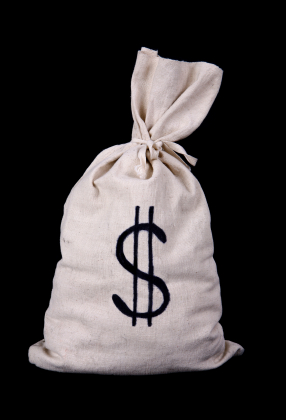ROYALTY RATES IN MERCHANDISE LICENSE AGREEMENTS
 The royalty provision in a merchandise license agreement consists of two components: (1) a royalty rate; and (2) the base against which that rate will be applied. In most cases, the royalty base will be Net Sales. Another article on this website discusses some of the issues that typically arise in negotiating the definition of Net Sales. In general, licensors want Net Sales to be as close to the gross invoice price charged by the licensee as possible, and want to limit or exclude deductions for credits, discounts and allowances. Licensees, on the other hand, want Net Sales to reflect the actual cash amounts ultimately received by the licensee.
The royalty provision in a merchandise license agreement consists of two components: (1) a royalty rate; and (2) the base against which that rate will be applied. In most cases, the royalty base will be Net Sales. Another article on this website discusses some of the issues that typically arise in negotiating the definition of Net Sales. In general, licensors want Net Sales to be as close to the gross invoice price charged by the licensee as possible, and want to limit or exclude deductions for credits, discounts and allowances. Licensees, on the other hand, want Net Sales to reflect the actual cash amounts ultimately received by the licensee.
The other part of the royalty equation ( the royalty rate) can sometimes be as difficult to agree on as the royalty base. While there are some generally accepted standard ranges for royalty rates, the "correct" rate for any particular licensing deal will depend on a variety of factors, including:
- Consumer recognition of the licensed property
- Television, movie, publishing or other current or anticipated exposure for the licensed property
- The licensed products on which the licensee will be authorized to use the property
- The territory and channels of distribution offered to the licensee
- The extent to which there are other supporting licenses in place
- The start date and term of the license
- Retailer interest in the licensed property and/or licensed products
- Advertising commitments by the licensor, licensee or other licensees
It is important to keep in mind that, even after considering all of these factors, the royalty rate will ultimately be the result of the agreement of the parties. Both the licensor and the licensee will have to find a rate that is mutually acceptable to them, or the deal will not go forward.
Regardless of what issues each side chooses to focus on in negotiations over the royalty rate, both sides need to recognize that, absent any contractual restrictions, there are three potential ways for the licensee to sell licensed products, and each type of sale calls for a different royalty rate, as explained below:
Domestic/Regular Sales. In most cases, industry studies and surveys of royalty rates list ranges of rates for regular domestic sales ( i.e., situations in which the licensee arranges for the manufacture of the licensed products offshore, pays for the shipment of those products to the licensee(s warehouse, and then ships the products from its warehouse to a retailer for resale to consumers. The retailer will pay a regular wholesale price that is some percentage of the retail price (typically, 50% or less), and the wholesale price will be set at a level that will allow the licensee to recoup its shipping and warehousing costs.
F.O.B. Sales. Target, Wal-Mart and other large retailers often have the ability to take delivery of licensed products directly from an offshore manufacturer, and ship those products into the U.S. themselves. A sale in which the retailer takes possession of the licensed products directly from the factory and assumes responsibility for shipping costs is called an F.O.B. sale. With an F.O.B. sale, the licensee will not need to recoup any shipping or storage costs, and thus the price charged to the retailer will be less than the regular wholesale price. In order to account for this reduction in the royalty base, the licensor should ask for a higher royalty rate for F.O.B. sales, as illustrated in the following example:
Assume the regular domestic royalty rate is 8% and the regular wholesale price is $8. The royalty from a domestic sale would be $.64. If shipping and storage costs equal 25% of the wholesale price, the licensee would net $5.36 after accounting for royalties, shipping and storage. If the F.O.B. price is $6, the licensor(s royalty will fall to $.48. The licensee(s shipping and storage costs will be zero, and the net to the licensee after accounting for the royalty will be $5.52. In other words, the licensee will make more money from an F.O.B. sale than a domestic sale, but the licensor will make less.
However, if the licensor has negotiated for a 10% royalty rate for F.O.B. sales, the licensor(s royalty will be $.60 (a loss of only $.04 from a domestic sale), and the licensee(s net after the royalty will be $5.40, which is approximately the same as the licensee(s net after royalties, shipping and storage for a domestic sale.
Direct Sales. In addition to wholesale sales to retailers, some licensees have the ability to sell licensed products directly to consumers, either through their own stores or through websites or other mail order facilities. In these situations, the licensee is acting as both the wholesaler and the retailer. The licensee will be selling licensed products at retail prices, but the licensee is arguably incurring the overhead costs associated with both the wholesaling and retailing functions. Accordingly, a licensee that plans to sell at retail will usually ask for a royalty rate for direct-to-consumer sales that is one-half of the royalty rate for regular domestic sales.
When negotiating a license agreement, licensors and licensees need to consider how the licensed products will be sold, and provide an appropriate royalty rate for each type of sale.